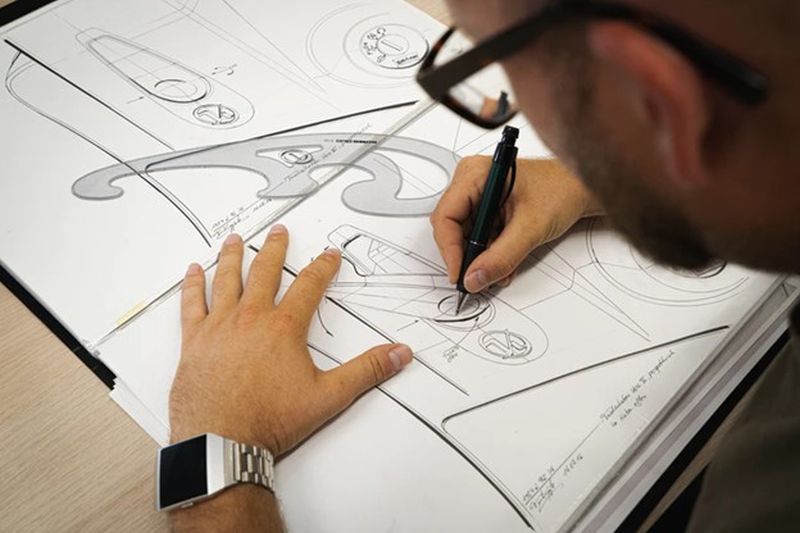Patent, Copyright, Trademark, or NDA: How to Protect Your Idea
Patents get all of the attention but there are lots of other options available to protect your product. In this article you will discover the seven best ways of legally protecting your new product.

This is a guest post by Intellectual Property attorney Chris Heer of Heer Law.
You could come up with the most revolutionary and useful product in the world, but unless it is legally protected, you will have wasted a lot of time and money, as others will be able to copy your designs without legal repercussions.
So, even at the beginning of a new product design, you need to think about how you are going to safeguard it.
There are several ways in which you can protect a new product legally. A combination of methods is usually best, but the precise protection methods you utilize will be dependent on the nature of your specific product.
#1 – Utility Patent
The best and most well-known way of protecting a new product is to gain a utility patent. The patent covers the creation of any new or improved product that is useful.
Commonly known as a “patent for invention,” a utility patent prohibits others from making, using, or selling your invented product without prior authorization.
Utility patents are valuable assets because they give product developers exclusive commercial rights for making and utilizing their products. Utility patents can last up to twenty years. They are issued by the US Patent and Trademark Office.
#2 – Provisional Patent Application (PPA)
It can take time to get a utility patent. But as the creator of a new product, you will obviously want your creation to be protected by a patent as soon as possible.
However, while filing for a patent quickly is desirable, you could not be in a position to do that for a while because you need to finalize details surrounding the manufacture and use of your product.
Or, you may simply not be able to afford the cost of filing a utility patent.
Another reason you may want to delay filing is that you have not yet tested the marketability of your product. In such circumstances, you should consider filing for a provisional patent application.
When you file a provisional patent, the filing date can be used in the context of a priority claim, and securing a filing date for a provisional patent means the contents of your application can be made without having to lose patent rights.
#3 – Design Patent
Depending on the precise product you come up with, you could legally protect it with a design patent. You can use a design patent for a product that is protected by a utility patent.
The premise of a design patent is it safeguards the unique visual elements of a product design, such as ornamental patterns on products like furniture, jewelry, and shampoo bottles.
Things like computer icons can also be covered with a design patent. Once your product has a design patent, an item that uses a substantially similar design cannot be used by someone else without first gaining permission from the patent holder.
Only drawings and limited text are required to file for a design patent. The patent lasts for up to fifteen years.
# 4 – Copyright
Copyright is about protecting the look of an item from being reproduced. The standards for qualifying for copyright protection are low. To qualify, the design must contain an element of creativity.
So, if you come up with an elaborate design for a drink bottle, the design could be legally safeguarded under copyright law. However, the copyright will not protect the functional elements of your product. It only covers the visual design.
Therefore, copyright is limited protection that is only available for specific items. Only use copyright to protect your product if it suits the visual-design aspect of that product.
Copyright is best used for products when you want to prevent others from copying a visual design verbatim to make counterfeit items.
# 5 – Trademark
Along with patents, a trademark is one of the best ways of legally protecting elements of your new product. A registered trademark can be applied to a product’s logo, accompanying slogan, and other parts.
It is simple to gain a registered trademark for qualifying brands and products and it only costs a few hundred dollars. Apply at the US Patent and Trademark Office.
Once your trademark is registered, it not only stops others from using things like your brand name, it also enhances your brand because customers will associate the registered trademark symbol with trustworthiness and reputability.
# 6 – Non-Disclosure Agreement (NDA)
You not only need your product to be protected from third-party usage, you also need to protect it while it is in development.
That means ensuring anyone who has access to the project does not share the product design with any third parties who could potentially create a similar product and get it to market before you have legally safeguarded your product.
If this happens, you are left with a product that you cannot sell after having wasted your resources, money, and time.
Legally protecting a product before it is ready can be challenging, but you can ensure that no one involved with its production gives away your secrets by getting each person to sign a non-disclosure agreement.
The agreement ensures that confidentiality is a formal condition of a working relationship. The contract should not include an end date in order to maximize your product’s protection further.
There are two types of non-disclosure agreements. Mutual agreements hold both parties in confidence. Unilateral agreements state the other party cannot reveal product secrets.
#7 – Non-Compete / Work-for-Hire Agreement
Non-compete agreements and work-for-hire agreements are similar to non-disclosure agreements in that they ensure product secrets remain confidential.
A non-compete agreement can be used for anyone you hire to work on developing your product who has access to your information, ideas, or processes. A time period will be given in a non-compete agreement.
A work-for-hire agreement is ideal for ensuring people working on your product design keep not only the original idea confidential but also keep incremental modifications and improvements secret.
Basically, a work-for-hire agreement makes sure you own the intellectual property of whatever your work-for-hire teams create.
Other content you may like:
- Why Patents Are a Death Trap for Entrepreneurs and Inventors
- How to File a U.S. Provisional Patent Application (PPA)
- How to Protect Yourself While Bringing Your Product to Market
- How to Not Get Ripped Off Bringing Your Invention to Market
- How to Conduct Your Own Patent and Prior Art Search



PCB layout is considered an “artwork”, and thus it is protected under copyright law. My understanding is that it is automatically copyrighted even if you don’t put a copyright mark on it. I am not a lawyer, but I have been told this several times by IP attorneys.
If someone copies your layout design and sells it in products, they are violating your copyright.
Copying your circuit design with a fresh layout is not protected by copyright.
Chinese knock-offs copy PCB designs verbatim all the time. You can halt their import into the US and other friendly countries (at least until they redo the layout). Going after them in China is futile.
That’s a great point Greg, thanks for sharing that one!